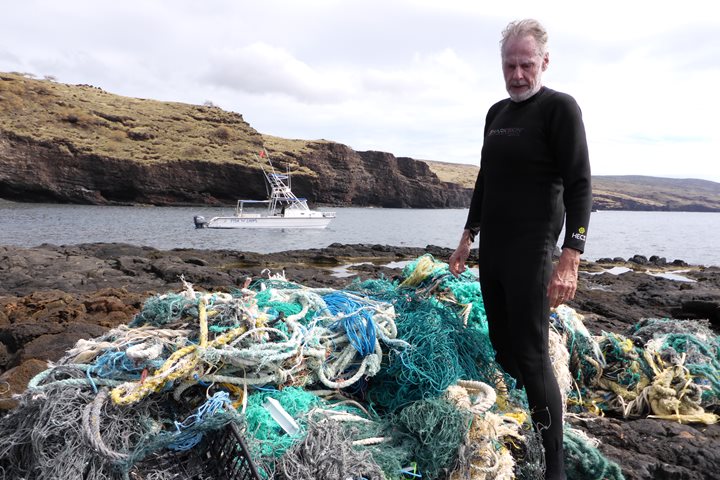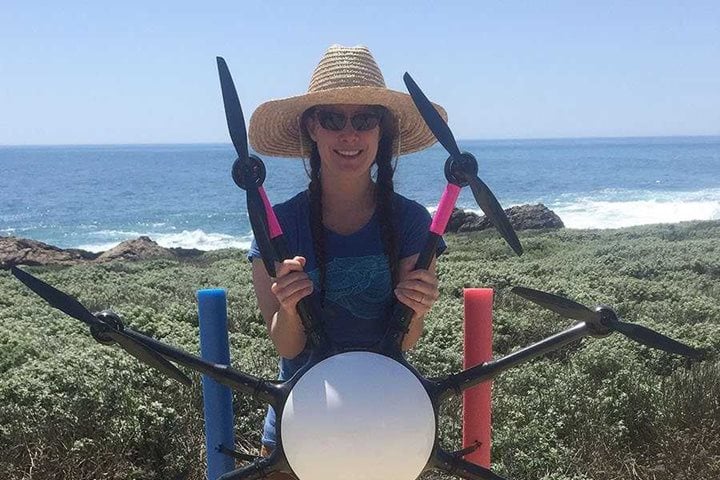Call +1.800.397.3348 or contact your travel advisor
- WorldView
- 4 Min Read
- 17 Apr 2019
Lindblad's Undersea Team Splashes Down at NASA
Our dive team sees some extraordinary creatures while exploring the undersea—alien-like sea anemone, technicolor nudibranchs, massive manta rays, all sorts of strange fish—but last month they swam with something completely out-of-this-world: NASA astronauts! As part of a 4-day dive safety and logistics workshop, Lindblad had the amazing opportunity to spend time at the Neutral Buoyancy Laboratory (NBL) in southeast Houston. Get Inspired By Photos, Videos, Webinars, Stories, And Exclusive Offers. Sign Up
The coolest team photo ever! Photo by Peter Webster
First used in 1997 to help astronauts prepare for their space missions, NBL’s massive pool closely simulates the conditions of weightlessness in orbit. The pool—which spans 202 feet, is 40 feet deep, and holds 6.2 million gallons (that's equivalent to about 10 Olympic swimming pools!)—accommodates 1:1 scale, detailed mock-ups of the International Space Station. Astronauts are submerged in their spacesuits and can practice working on tasks they’ll need to accomplish in space. That size, and that depth in particular, is what appealed to our Dive Operations Specialist Ashley Knight when she was considering different training venues. “It’s really hard to find a scuba pool where you can simulate an actual diving scenario and dive deeper than 20 feet or so,” she explains.
Diver Adam Maire checks out a part of the International Space Station.
Ashley first learned about the facility last summer while taking an advanced course on emergency dive accident management at the USC Catalina Hyperbaric Chamber. One of her instructors, Dr. Bob Sanders, happened to be the NBL’s diving doctor and invited her to come take a tour if she were ever in town. When she called a few months later to take him up on the offer he mentioned the facility was available for private companies to rent. After filling out all the paperwork and sorting out all the details, Lindblad booked 1/8th of the pool for a full day of training—making us the first travel company to ever use it. This past March,13 divers gathered from across the globe for the field trip of a lifetime.Working together on rescue drills.
Aside from being just about the coolest place you could possibly train, the NBL had every underwater tool imaginable, like giant balls that froth up the water to simulate rough sea conditions. “They can basically put together any sort of scenario you want,” says Ashley. “A huge part of the training we needed to do was figuring out how to get an injured diver onto a Zodiac and they were able to extend a small dock out into the pool and even set up an inflatable boat for us.” The team spent a lot of time trying different techniques to do this with one rescuer and then two. “It was really reassuring when we figured out ways for even the smallest diver among us to get the largest back into the boat unassisted," explains Adam Maire, one of our expedition divers.
The VideoRay is a new lighter weight ROV that will soon be aboard all our ships.
They also got to practice using our Remote Operated Vehicles (ROVs) including a new smaller one that will soon be available on our entire fleet. “Practicing driving the ROVs was definitely a highlight of my training, “ recalls Christine West, another of one of our divers. “I couldn’t help but think what this pool at NASA means for astronauts for space exploration while we were perfecting the use of these tools for undersea exploration beyond the reach of scuba diving. The connection was deep and inspiring.”
Christine West practices maneuvering the ROV underwater.
While the team was thoroughly focused on their own training it was hard not to be a bit starstruck by their pool mates. Across the way two astronauts were training for a spacewalk this summer. Thanks to speakers hooked up underwater astronauts can talk to the control tower and it’s easily heard throughout the pool. “At one point they were talking about the astronaut being ready to go to space and do his job on the Space Station and I heard him say, ‘I have been training my whole life for this moment!' It was incredibly humbling to be present in that moment of someone realizing their dream to explore space,” recalls Adam.



